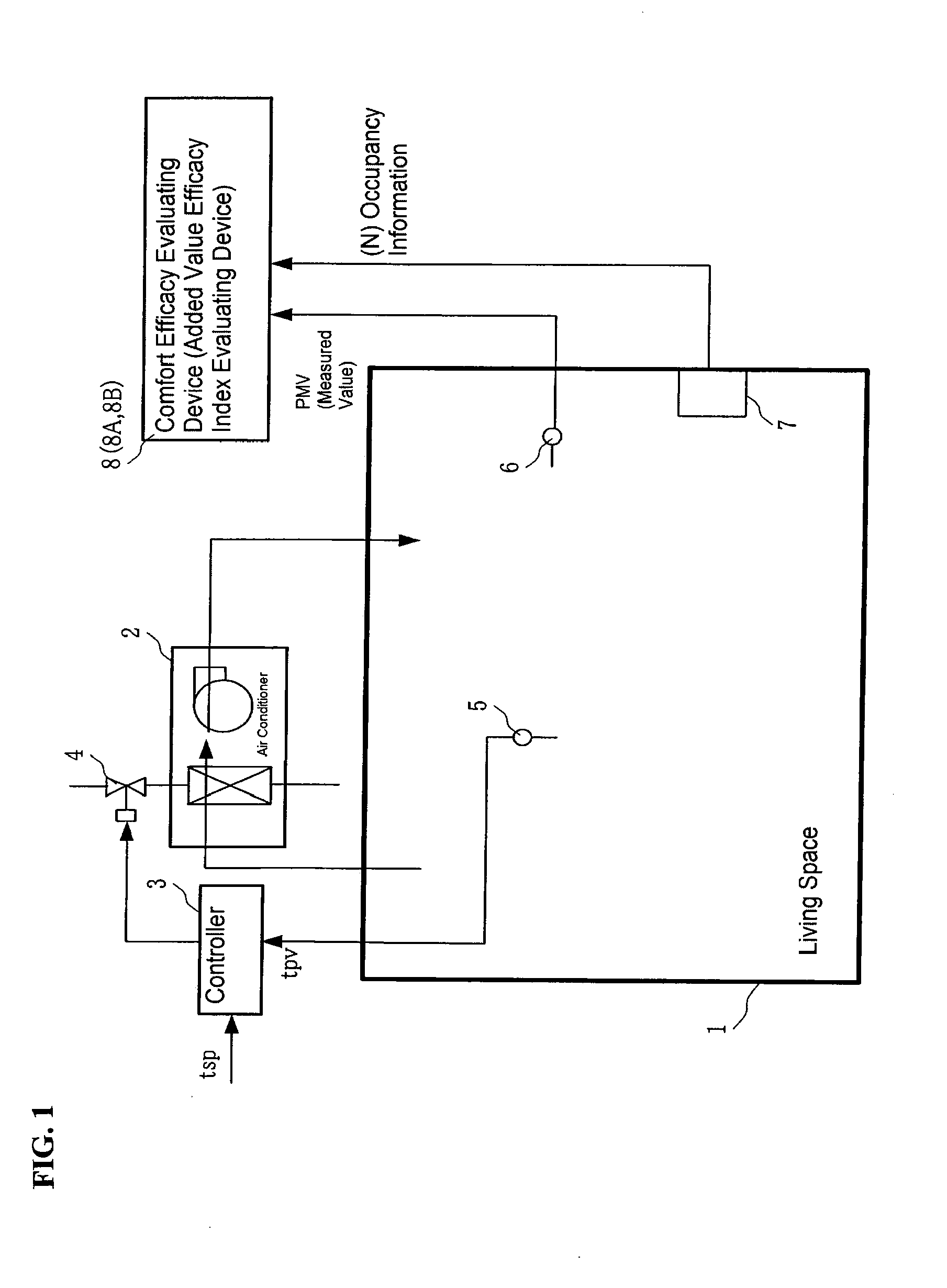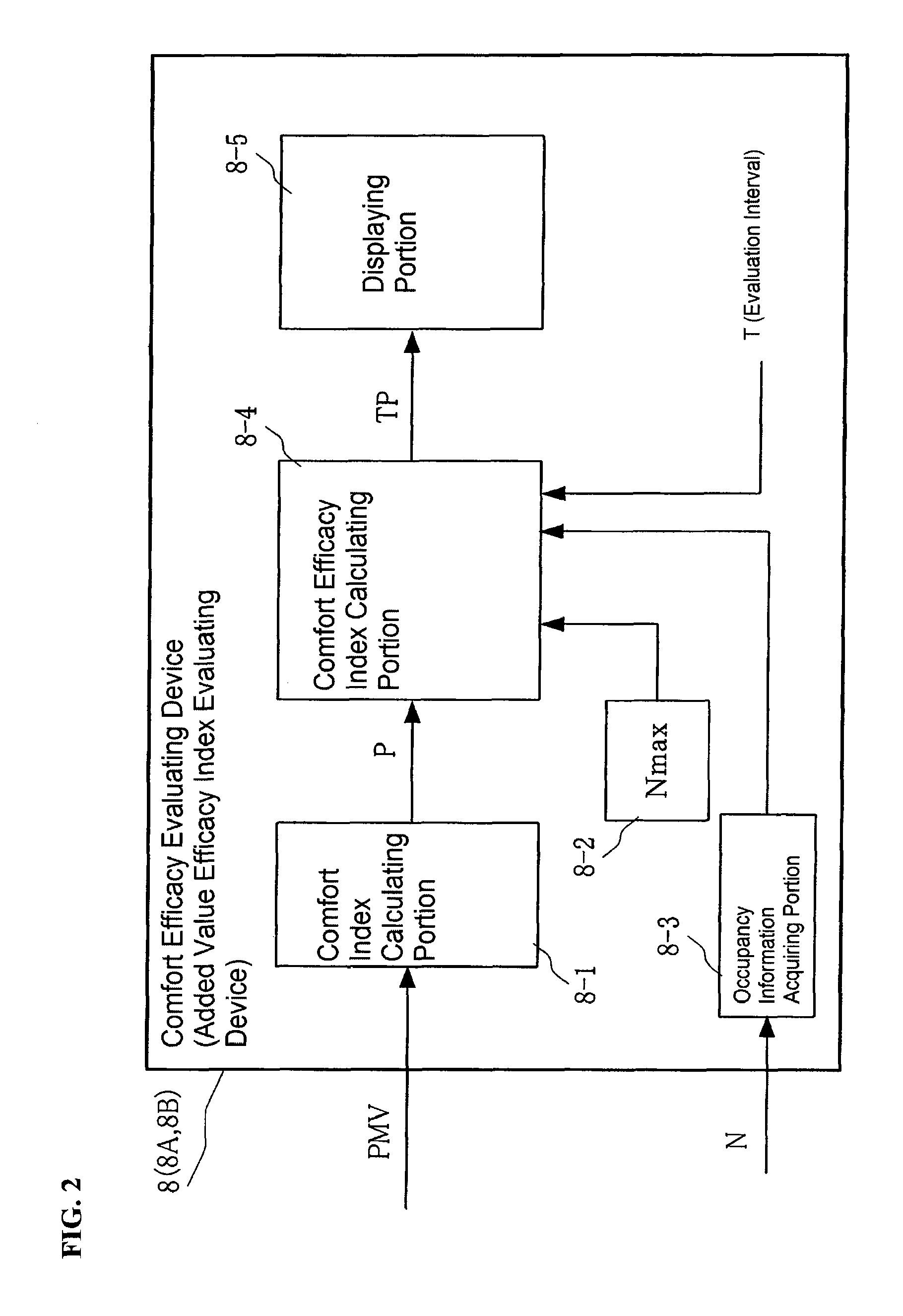Method and device for living space added value efficacy index evaluation
a technology for living space and efficacy, applied in error detection/correction, refrigeration components, digital computer details, etc., can solve problems such as unnecessary sacrifice of comfort, inability to easily evaluate comfort and energy conservation, and renovations themselves require substantial time and expens
- Summary
- Abstract
- Description
- Claims
- Application Information
AI Technical Summary
Benefits of technology
Problems solved by technology
Method used
Image
Examples
examples of application
[0052]Although in the basic example set forth above, the comfort efficacy index TP was calculated as Σ(P·W), instead the comfort efficacy index TP may be calculated as a weighted average based on Σ(P·W), as in Equation (4), shown below. The comfort efficacy evaluating device 8 that performs the calculation of the comfort efficacy index TP using this Equation (4) is an example of application of the comfort efficacy evaluating device. The example of application of the comfort efficacy evaluating device is defined, in the below, as the comfort efficacy evaluating device 8B, in order to draw a distinction from the basic example set forth above,
TP=Σ(P·W) / ΣW (4)
[0053]FIG. 7 illustrates the state wherein a comfort efficacy index TP for a living space 1 of a building A is required in an example of application of this comfort efficacy evaluating device 8B. FIG. 8 illustrates the state wherein a comfort efficacy index TP for a living space 1 of a building B is required in an example of appli...
PUM
 Login to View More
Login to View More Abstract
Description
Claims
Application Information
 Login to View More
Login to View More - R&D
- Intellectual Property
- Life Sciences
- Materials
- Tech Scout
- Unparalleled Data Quality
- Higher Quality Content
- 60% Fewer Hallucinations
Browse by: Latest US Patents, China's latest patents, Technical Efficacy Thesaurus, Application Domain, Technology Topic, Popular Technical Reports.
© 2025 PatSnap. All rights reserved.Legal|Privacy policy|Modern Slavery Act Transparency Statement|Sitemap|About US| Contact US: help@patsnap.com



